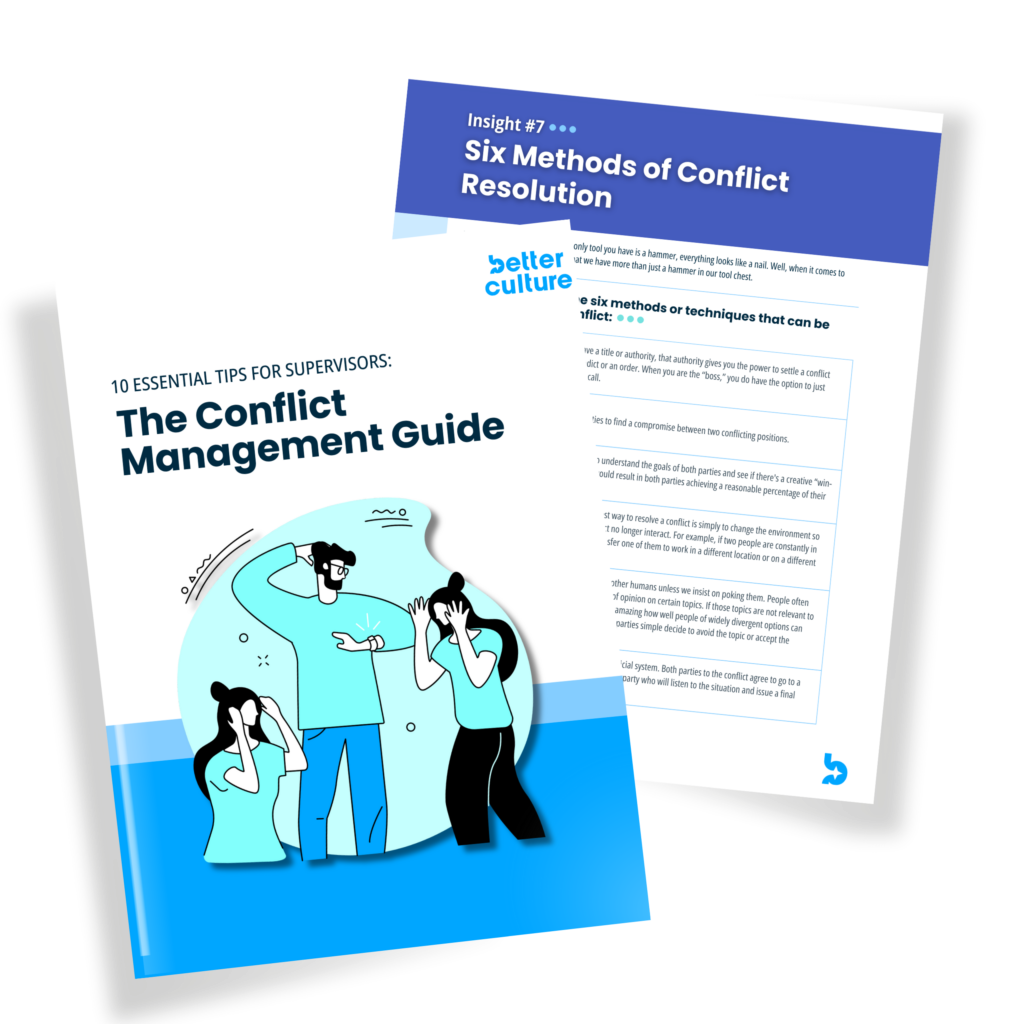Every now and then a new idea comes along that is just flat-out good. So good, in fact, that it’s silly to argue against it. We have one of those to share with you.
If you want (we mean really want) to create and protect a top-notch culture in your work setting, you MUST identify a specific person in your workplace who is going to oversee and drive that effort. And no, we don’t mean a “culture committee” who plans the annual summer fun day, suggests improvements for the snack bar, and selects the location for the holiday party.
No – we mean a real-life individual who owns the critically important responsibility of creating and protecting a culture that will attract, build, motivate, and retain great employees. BetterCulture dubs these individuals as your “Chief Culture Officer” (CCO).
To be clear, we are not suggesting you hire or promote someone to take the formal title of Chief Culture Officer (although for some larger companies this would be wise), but rather that the Chief Culture Officer function be assigned to a specific individual. Some CEOs will eagerly take on this role themselves. In other settings it can be assigned to the Chief Operating Officer, the Chief People Officer, or someone else in the company who has the passion and credibility to lead this effort. The key is that a single, designated individual is clearly in charge of monitoring the culture and driving initiatives for constant improvement.
Why is having a designated Chief Culture Officer so essential?
Knowing how to build and protect culture is sometimes referred to – and disparaged – as a soft skill. We see it very differently. Try this: money easy; people hard. We will put our money on those who get this soft skill right.
The dots are not hard to connect. Without a healthy culture you will struggle to attract and keep good employees, your products and services will erode, your reputation will suffer, and your business will sink.
So what does it take for a Chief Culture Officer to be effective?
There are four hard and fast requirements for someone to be successful in the role of Chief Culture Officer (CCO):
- Knowledge – your CCO has to know something. Actually, they have to know quite a bit. Being a good person with a positive attitude is perhaps necessary, but it’s far from adequate criteria to appoint someone to the role of CCO.
- Tools – your CCO needs to have access to tools, technology, assessments, and training content that will enable them to make good use of their knowledge.
- Ongoing support – your CCO needs to have access to an outside resource to help them continue to develop their skills and to call on for support and guidance when needed.
- Power – your CCO needs to have, or be delegated, sufficient power in your organization to ensure others attend to their requests, suggestions, and (on occasion) directions.
So how do you get an effective Chief Culture Officer?
If you pick the right person and take care of requirement #4, BetterCulture is designed to provide your Chief Culture Officer with #1, #2, and #3:
Knowledge: Fortunately, there is a large body of knowledge available to help someone function well as CCO. BetterCulture has assembled that knowledge and can provide your designated CCO with a concentrated training experience that will have them certified as a BetterCulture Chief Culture Officer. This is one of the primary services we offer as we strive to make the world a better place to work.
Tools: BetterCulture provides our certified CCOs with a wide array of high-quality assessments and training tools. Examples include:
- the BetterCulture Engagement Survey©
- BetterCulture’s on-demand leadership development program that the CCO can use as a whole to facilitate a topnotch leadership development initiative or more narrowly to coach and assist an individual supervisor who is facing a challenging situation
- the BetterCulture Team Assessment tool
- BetterCulture’s Mentor Training Program
- our Predictive Index for Supervisor Selection
- our Backbone and Heart coaching tool, and
- BetterCulture’s Characteristics of a High Functioning Executive Team.
All the above are examples of tools that a CCO needs to have at their fingertips to be able to respond to both challenges and opportunities for improvement.
Ongoing Support: Being responsible for driving leadership development and cultural health is a big job – and it is one that will benefit from competent outside guidance and counsel. Each setting has its unique quirks, and a paint-by-numbers approach (no matter how much someone tells you it will) won’t work for building culture.
Having access to a knowledgeable and responsive consultant can make the difference between a Chief Culture Officer who offers surface level training and guidance (pablum) and one who makes a dynamic impact. BetterCulture offers this essential support by providing 1) on-demand consultation, 2) effective prompts to keep this work a priority, 3) ongoing learning opportunities, and 4) opportunity to regularly exchange ideas and best practices as part of a peer cadre of certified BetterCulture CCOs.
Power: When the CEO or Owner functions as the Chief Culture Officer, there is no problem with power. You just have to make sure the CEO has knowledge, access to the right tools, and reliable ongoing support.
It is when a CEO or Owner chooses to delegate the Chief Culture Officer role to another that they must give that designated executive the power to hold others accountable regarding employee interactions and cultural standards.
Failing to do so will likely result in the Chief Culture Officer being viewed akin to a cheerleader, mediator, or trainer. All three of those roles can be helpful, but will lack the clout to significantly move the needle on culture. A CEO must be wise enough to make it clear that all executives and supervisors are expected to work collaboratively with the CCO, openly accepting guidance as to how they can more positively impact the culture and deferring to the CCO whenever they are determined to be doing damage.
Back in the 1960s, air conditioning was not yet standard in cars. Many thought that air conditioning wasn’t necessary, UNTIL they had it. Then a car without air conditioning was unthinkable. Of course, air conditioning would not have become standard equipment if it had been ineffective, just blowing hot air and making no real impact on comfort.
There is a parallel here for the idea of a clearly designated, competent Chief Culture Officer. If you have not had one, you may well not appreciate the value. But for those who do follow our advice to designate a Chief Culture Officer, assure they have adequate power, and then have BetterCulture provide your Chief Culture Officer with the knowledge, tools, and ongoing support they need to be effective; not having a Chief Culture Officer will soon become as unimaginable as driving a non-air-conditioned car across Arizona in the middle of July.
So here’s the challenge for BetterCulture. Can we get decision makers to understand (1) the benefits of having a clearly designated Chief Culture Officer and (2) the importance of implementing it well? If companies proceed without each of the four essential elements we have pointed out, the concept of a Chief Culture Officer is destined to fade away as little more than a passing fad; and a big opportunity will have been lost as a victim of getting the “what” right and blowing the implementation because of a failure to focus attention on the “how.”
Our goal is to have BetterCulture clients smiling at what they are achieving with a knowledgeable, well-equipped, and well supported Chief Culture Officer…a smile they will take all the way to the bank.




